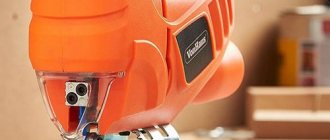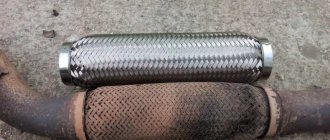In order to repair a flat tire on a bicycle or car, you need a vulcanizer for inner tubes. The device can be purchased in a store or made by yourself. Raw rubber is used as the patch material. It consists of rubber sheets covered with polyethylene film on both sides. Due to its plasticity, under pressure and high temperatures it is welded to the chamber.
Homemade vulcanizer from a Voskhod motorcycle piston
A vulcanizer and a homemade all-terrain vehicle with inner tubes are one whole; you cannot go on a trip on an all-terrain vehicle without a vulcanizer.
He should always be on the all-terrain vehicle in his specially designated place. No matter how you protect the cameras, punctures still happen. It’s good if this happened not far from home, then you can get there on a punctured one; if it’s the rear wheel, then the second rear wheel needs to be lowered and in first gear, slowly drive home. But if this happened 25 - 30 km from home, and the road is such that it is impossible to walk on foot - complete swamps. Of course, you can ask a friend and he will bring the camera on the same all-terrain vehicle. But it is still unknown how much you will travel on another camera. This is where a homemade vulcanizer made using a piston from a Voskhod motorcycle engine comes in handy, which does not require electrical energy, but only requires 40 - 50 grams of gasoline, which is in our all-terrain vehicle tank.
A homemade vulcanizer is very easy to make. It consists of several parts: 1 - vulcanizer base 2 - bolts 3 - beam 4 - piston 5 - screws 6 - nuts 7 - holes for screws 8 - holes for bolts
The base of vulcanizer 1 is made of wood, since wood does not interfere with good heating of the rubber. Bolts 2 are inserted into the holes in the base and secured to the base using self-tapping screws 5, preventing them from turning in the hole in the base.
Bolts 2 are made of a metal rod with a diameter of 12 mm. A washer is welded at one end of the rod, and an M12 thread is cut at the other. A beam is placed on both bolts on the thread side, which, using nuts, presses the vulcanizer piston to the base.
There is a damaged chamber between the base and the piston. The following photo shows the vulcanizer in assembled working condition.
Source of the article: https://voshod-2m.ru/samodelki/v42.php
Homemade vulcanizer - production and use
If you have a punctured tire, the easiest option is to go to a tire shop. However, there are many who like to do everything themselves, and a tire service is not always nearby. Sometimes the costs associated with going to a tire shop (travel, time, the procedure itself) add up to a substantial amount, especially if you have to use this service often.
In general, for various reasons, for those who want to fix breakdowns at home, I offer several options for making a homemade vulcanizer at minimal cost.
Using a homemade vulcanizer, for example one made from an iron, you can quickly and reliably repair cars, motorcycle and bicycle tubes, air mattresses, heating pads, various beads, inflatable toys, etc.
One of the most common options for a homemade vulcanizer is the option using an old iron. The reason for this is new, more functional irons, and old (Soviet) irons in working condition (if you don’t have any left) will not be difficult to find from a neighbor. Here's a free basic vulcanizer part for you.
Below are a few designs. Which one to choose is up to you, the basic idea is the same, the difference is how to ensure a clamp connection at the place where the rubber product is vulcanized.
Raw rubber is soaked (for some time) in gasoline, the size is slightly less than the size of a patch. The puncture site is treated with sandpaper (the size is generous) and wiped with gasoline. A patch is cut from tube rubber, the edges are rounded. The patch is also treated with sandpaper and then with gasoline.
Next: put raw rubber on the hole, put a patch on it, clamp everything in our vulcanizer. You can place a piece of newspaper to prevent the rubber from sticking to the vulcanizer plate. Wait until water comes into contact with the vulcanizer (15-20 minutes).
Turn off the vulcanizer, wait a little, remove the vulcanizer, and let the rubber cool. They also check the temperature using granulated sugar: if its grains in contact with the hot vulcanizer begin to melt and turn yellow, then it’s time to turn off the vulcanizer.
If your thermostat is working, set it to 150 degrees. (approximately for ironing silk). The thermostat can be adjusted experimentally.
If the smell of burnt rubber appears, this is a sign of high temperature; if the patch has not merged well (vulcanized), this is a sign of insufficient temperature or short vulcanization time. After one or two times everything becomes clear and vulcanization can be started.











